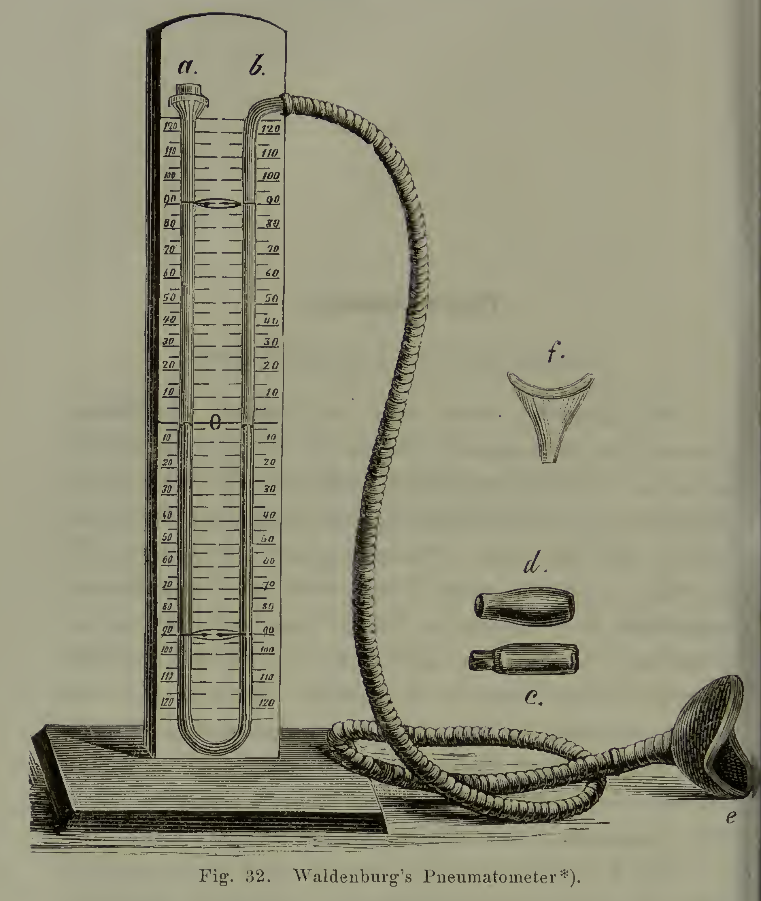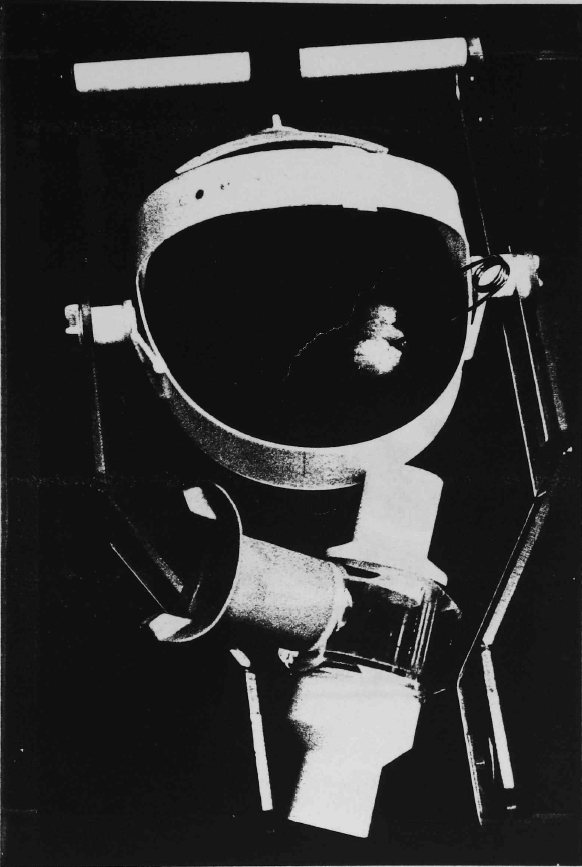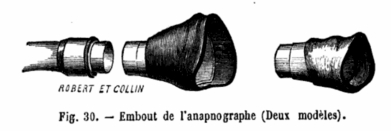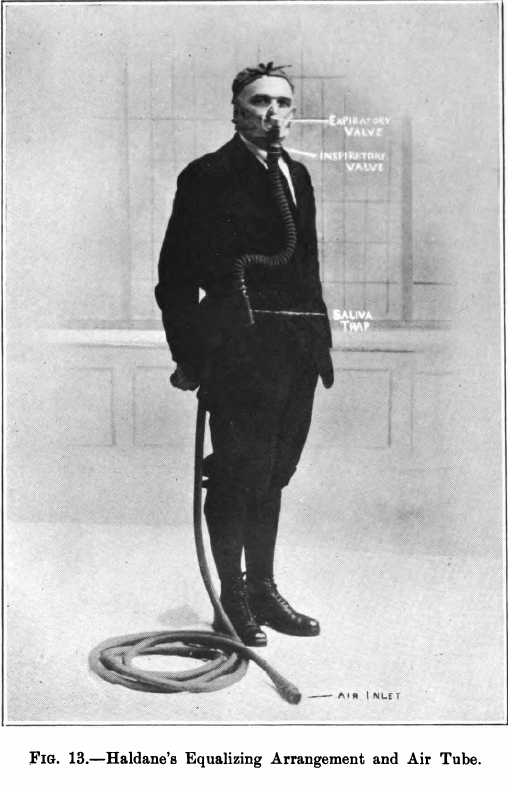
Designed to measure inspiratory and expiratory pressures. From ‘Handbuch der pneumatischen therapie’, by Dr. Theodore Knauth, published 1876, page 282.

Designed to measure inspiratory and expiratory pressures. From ‘Handbuch der pneumatischen therapie’, by Dr. Theodore Knauth, published 1876, page 282.

From a 1986 doctoral thesis on the Maximal Acceptable Weight of Lift by J.E. Fernandes

A mouthpiece and nasal mask used with the Apnapographe, a writing spirometer developed by Bergeon. From “Arsenal du diagnostic médical: recherches sur les thermomètres, les balances, les instruments d’exploration des organes respiratoires, de l’appareil cardio-vasculaire, du système nerveux, les spéculums uteri et les laryngoscopes” by Maurice Jeannel, published by Balliere, 1873, page 102.

Haldane’s equalizing arrangement used in testing mine safety equipment. From The Department of Scientific and Industrial Research, Advisory Council, Second Report of the Mine Rescue Apparatus Committee, Published by His Majesty’s Stationary Office, 1920, page 38.
From, The Year Book of General Medicine, Volume 1, Year Book Publishers, 1908, page 90.
“A simple aseptic mouthpiece for the spirometer is described by Thomas A. Storrey. This mouthpiece (A) is made of wood, beveled on one end to fit easily between the lips. The other end is made to fit snugly in the bore of the rubber tubing (B) which leads to the spirometer. These may be made anywhere. The Narragansett Machine Company of Providence, R.I., has furnished me with tips at the rate of $3 per thousand. Each mouthpiece is used but once. It is then thrown away. At one-third of a cent each this is not extravagant. With such tips in use the danger of spreading contagion from mouth-to-mouth in our anthropometric investigations would disappear. (Fig. 9)”
From: Yandell Henderson, AND INDIRECT CALORIMETRY VI. THE RESPIRATORY EXCHANGE APPLICATIONS OF GAS ANALYSIS: ARTICLE: J. Biol. Chem. 1918, 33:47-53.
“A form of valve which has proved convenient has recently been devised at the University of Minnesota by professors A.D. Hirschfelder and E.D. Brown. By their kind permission a diagram of two of these valves arranged for inspiration and expiration on a T-tube is shown in Fig. 2. Each valve is made of a large tin salve box with a disk of sheet rubber inside, held in place by a ring spring wire soldered to the box at one point. The crack around the box is made tight with adhesive plaster. In the figure the cover of one valve is removed to show the rubber and wire.”
From: The Newer Methods of Blood and Urine Chemistry, by By Rutherford Birchard Hayes Gradwohl, Abraham Jacob Blaivas, 1920, Page 369.
“The mouthpiece is made of soft pure gum rubber, and consists of an elliptical rubber flange having a hole in the center 2 cm. in diameter, to which on one side a short rubber tube is attached. On the opposite of the hole, at right angles to the rubber flange, are attached two rubber lugs. The rubber flange is placed between the lips, and the lugs are held by the teeth. The rubber tube of the mouthpiece is connected to the tube carrying the valves. The nose must be tightly closed if mouth breathing is used. This is accomplished by a nose clip, which consists of a V-shaped metal spring, the ends of which are provided with felt pads. A toothed ratchet is attached to the ends of the spring, and serves to hold the spring tightly clamped on the nostrils in the proper position.”
“Some individuals experience great distress when made to breathe through the mouth. For these it is best to use a face mask. Unfortunately at the present time no mask is entirely satisfactory. Perhaps the best is sold by Siebe, Gorman & Co. which is pictured in the cut. After being placed in position the face mask should be tested for leaks, which can be done by putting soap around the edges.”